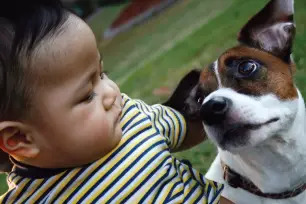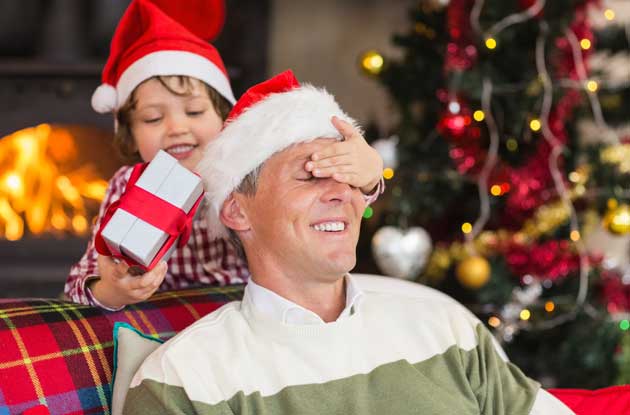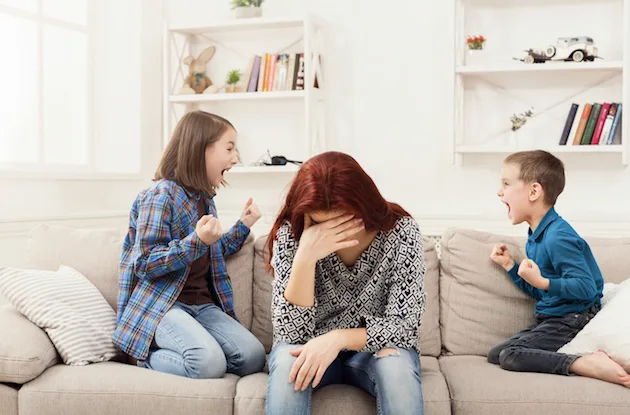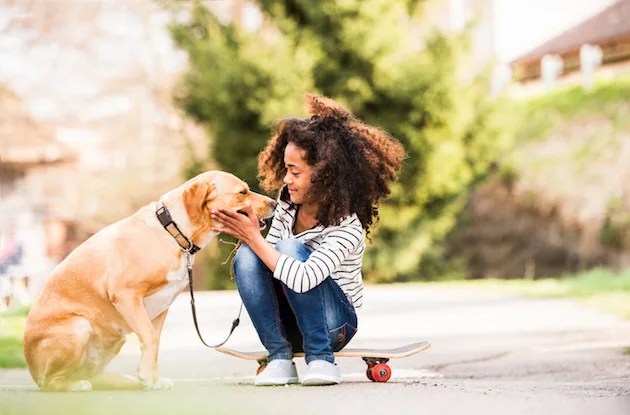The American Kennel Club provides expert tips on what to teach your child to ensure his or her safety when bringing a dog into the picture for the first time.
|
Kids should know where—and where not—to pet dogs; the animal’s chin or chest are safest options. |
Owning a pet at an early age can be a wonderful experience for any child. Not only do kids become more active with pets, but they also learn a variety of valuable lessons like responsibility and compassion. The first thing kids must learn about pets, however, is how to be safe around them.
“Dogs are amazing and loving creatures and can teach children how to be responsible at an early age,” says American Kennel Club spokesperson Gina DiNardo. “But, as with any animal, you need to teach your kids how to be safe around them to prevent accidents.”
Whether it’s a dog you know, one you’ve never met, or even your own pet, there are certain ways your child should approach a dog. Below are the steps kids should take before petting any pooch.
Basic Safety Tips for Kids and Dogs
Ask permission
It’s very important to ask a dog’s owner first if you can pet the dog. Not every dog reacts the same way to strangers petting them, and the owner will know if the dog is friendly and if it is safe for you to approach.
Approach calmly
If the owner says yes, make a fist, extend your hand slowly to the dog, and let him sniff the back of your hand. Dogs recognize people by scent, so letting him sniff your hand lets him become familiar with you.
| Meet the Breeds You can learn more about safety and put these tips to the test while meeting more than 210 dog and cat breeds at this year’s AKC Meet the Breeds event Oct. 20-21, 2012 at the Jacob Javits Center in Manhattan. Attendees will see exciting dog and cat demonstrations and play with hundreds of dogs, cats, puppies, and kittens. Visit meetthebreeds.com for more information and special discount offers. |
Where to pet
Once the dog has sniffed your hand, pet him gently under the chin or on the chest.
Don’t hug
Kids should never hug a dog. Dogs don’t hug each other, and they don’t understand hugs to mean love and affection like humans do. Wrapping your arms around a dog can stress him out and lead to an unnecessary bite.
Keep your chin up
Never put your face down in front of a dog. This can be threatening to the dog and cause him to react.
Avoiding Tricky Situations
Every so often, kids may come across a loose dog in the neighborhood with no owner present. “Parents should tell their children never to approach a dog they don’t know. However, sometimes they may find themselves in a situation where a strange dog approaches them,” DiNardo says.
If your child encounters a strange dog he should not run away, yell, or make other loud noises that may scare the dog. Instead, tell him to stand still with his arms crossed over his chest and to look away from the dog and avoid direct eye contact.
Children should not try to feed strange dogs. They may not take the treat gently and could end up hurting the child’s hands.
In addition to ensuring your kids are safe around dogs, you should also take steps to keep your family pets secure with other dogs. “Whether you’re at the dog park or taking a walk down the street, your dog may want to go and play with the others,” DiNardo says. “Always ask the owner if her dog is friendly and whether or not it’s alright for your pet to approach to play.”
Reading the Signs
In any situation, it’s helpful to know what a relaxed dog looks like versus a threatening one. Below are some guidelines to follow:
| Relaxed dogs: • The tail is up over the back, down but not pulled under the body, or wagging back and forth. • Mouth and lips are relaxed. • Ears will be in the natural position—neither back nor forward. • Hair will be smooth along the dog’s back. Threatening dogs: • The dog’s body may appear tense. • Ears most likely will be raised or pinned back. • The dog may start to growl. • Hair along the back of the dog’s neck may be raised. |
Also See:






















